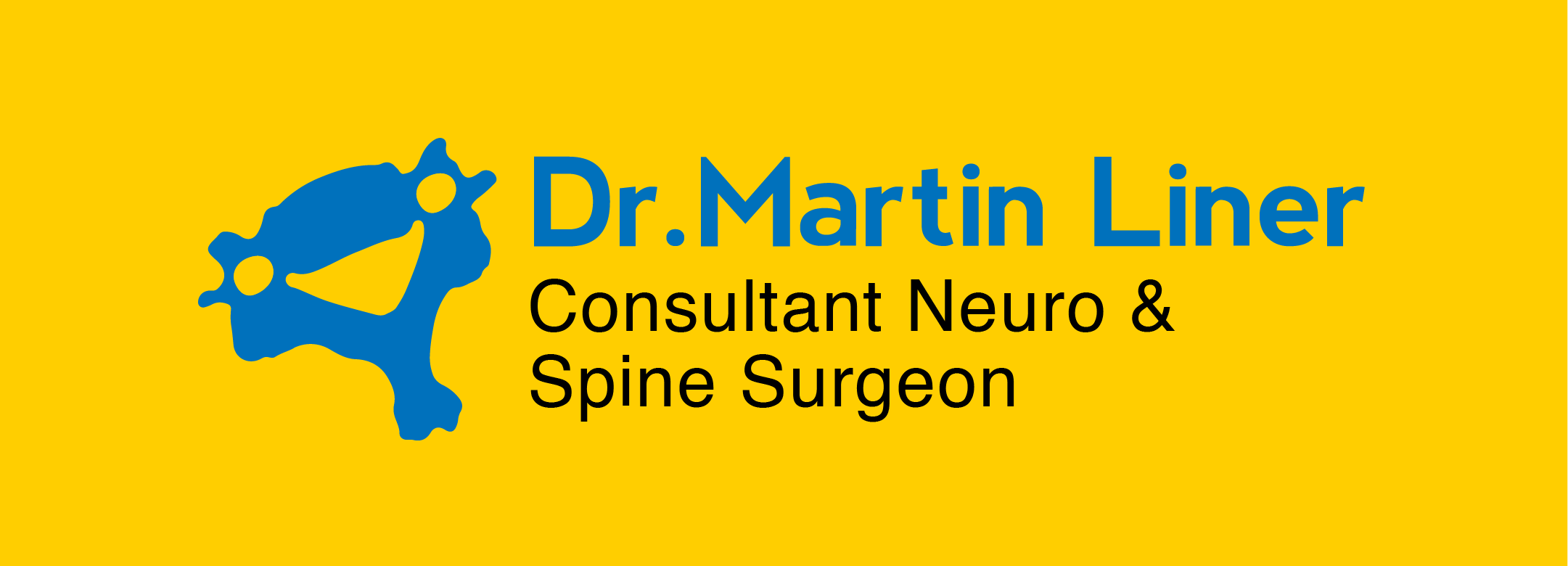Neck Pain Treatment in Dubai
The cervical spine, commonly known as the neck, comprises a complex system of nerves, bones, joints, and muscles, serving the crucial function of supporting and facilitating movement for the head. However, various issues can lead to neck pain, including irritation along nerve pathways, resulting in pain radiating to the shoulder, head, arm, or hand. Moreover, spinal cord irritation may manifest even without any pain just as altered sensitivity, mobility and/or coordination extending to the lower body and areas beyond the neck.
Typically, neck pain resolves within a short period, but persistent discomfort lasting for months may indicate an underlying medical condition requiring attention. Early intervention may be necessary in some instances to achieve optimal outcomes.
Our spine expert Dr. Martin Liner holds extensive experience in this field, offering end-to-end neck pain treatment in Dubai.

What is a Neck Pain like?
Neck discomfort may manifest as a sharp sensation localized in a specific area or as a milder but more widespread feeling across a larger region. Occasionally, this pain may extend to the head or coincide with headaches. Alternatively, it might be accompanied by muscle spasms in the neck, upper back, or around the shoulder blade. In rarer cases, individuals may experience shock-like pain or tingling radiating down the shoulder, arm, and/or hand.
The severity of neck pain can vary greatly, from minor and easily disregarded to severe and disruptive of daily activities such as dressing, concentration, or sleep. Sometimes, it can result in a stiff neck and restricted range of motion.
Neck pain duration is typically categorized as follows:
- Acute: Lasting less than 6 weeks
- Subacute: Lasting 6 to 12 weeks
- Chronic: Lasting 3 or more months
If all the above symptoms keep bothering you and do not seem to be going away on their own, you must consider consulting a qualified neck pain doctor immediately.
Causes of Neck Pain
Typical triggers of neck discomfort comprise:
- Incorrect posture (the alignment of the body while standing or sitting)
- Awkward sleeping positions
- Muscle tension
- Injuries like muscle strains or whiplash
- Prolonged use of desktop or laptop computers
- A herniated disc (slipped spinal disc)
- Natural wear and tear in the neck bones (cervical spondylosis) and spinal joints (spondylarthrosis), a common aspect of aging
- Degeneration of spinal discs , also inherent to aging
Less common sources of neck pain include:
- Damage to vertebrae, spinal cord, or nerves in the neck
- Compression of a nerve (cervical radiculopathy)
- Infections
- Bone damage or fractures due to osteoporosis
- Cancer
- Meningitis
- Arthritis
The exact reason behind your neck pain can only be diagnosed by a spine doctor Dubai.
Neck Pain Diagnosis
To diagnose neck pain, your doctor will conduct an examination and inquire about factors that exacerbate or alleviate the pain. If they suspect a more serious underlying cause, they may recommend tests such as blood tests, x-rays, CT scans, or MRIs.
Neck Pain Treatment in Dubai
The most effective approaches to managing neck pain usually involve:
- Maintaining mobility in the neck as much as possible
- Remaining physically active
- Modifying any activities that may exacerbate the pain
- Applying heat packs or ice packs to alleviate stiffness and pain in the neck
Consulting our neck pain doctor regarding suitable over-the-counter pain relievers is advisable. He might suggest anti-inflammatory analgesic creams or gels.
Engaging in neck manipulation or massage can offer temporary relief. Various physical therapies like physiotherapy, chiropractic care, osteopathy, or acupuncture may also provide assistance.
Initially, resting the neck can be beneficial, but prolonged rest should be avoided as it can lead to increased muscle stiffness, delaying recovery. Gentle neck muscle stretching is preferable. Our doctor or physiotherapist can demonstrate safe and gentle stretching techniques.

If neck pain persists, further investigation into the cause may be necessary. In cases of severe or chronic neck pain, steroid injections or, rarely, surgical intervention may be considered.
When is neck pain considered to be serious?
Certain indicators and symptoms linked with neck discomfort could suggest potential jeopardy to a nerve root or the spinal cord or the presence of an underlying ailment or infection. These warning signs, often termed “red flags,” may encompass symptoms like fever or chills, sensations of pain or tingling spreading into the arms or legs, difficulties with balance or coordination, or other concerning manifestations. Consulting a physician is imperative for an accurate diagnosis and the formulation of an effective treatment strategy.
In instances of severe neck pain stemming from trauma, such as a significant fall or motor vehicle accident, immediate medical attention is necessary.
Prevention Measures for Neck Pain
Maintaining spine flexibility and muscle strength is key to preventing neck pain. This can be achieved through consistent exercise, aiming for 30 minutes on most days, and incorporating regular stretching breaks throughout the day.
Emphasizing good posture, particularly when seated at work or while driving, is crucial. Avoid slouching or protruding the chin forward. Additionally, using a supportive pillow can play a significant role in preventing neck discomfort.
Consult Dr. Martin Liner. Get the right neck pain treatment in Dubai
Seeking relief from neck pain? Look no further than Dr. Martin Liner. With expertise in providing tailored treatments for neck pain treatment in Dubai, Dr. Liner offers personalized care to address your specific needs. Don’t let neck pain hinder your daily life any longer—schedule a consultation with Dr. Martin Liner today to embark on your journey towards pain-free living.

